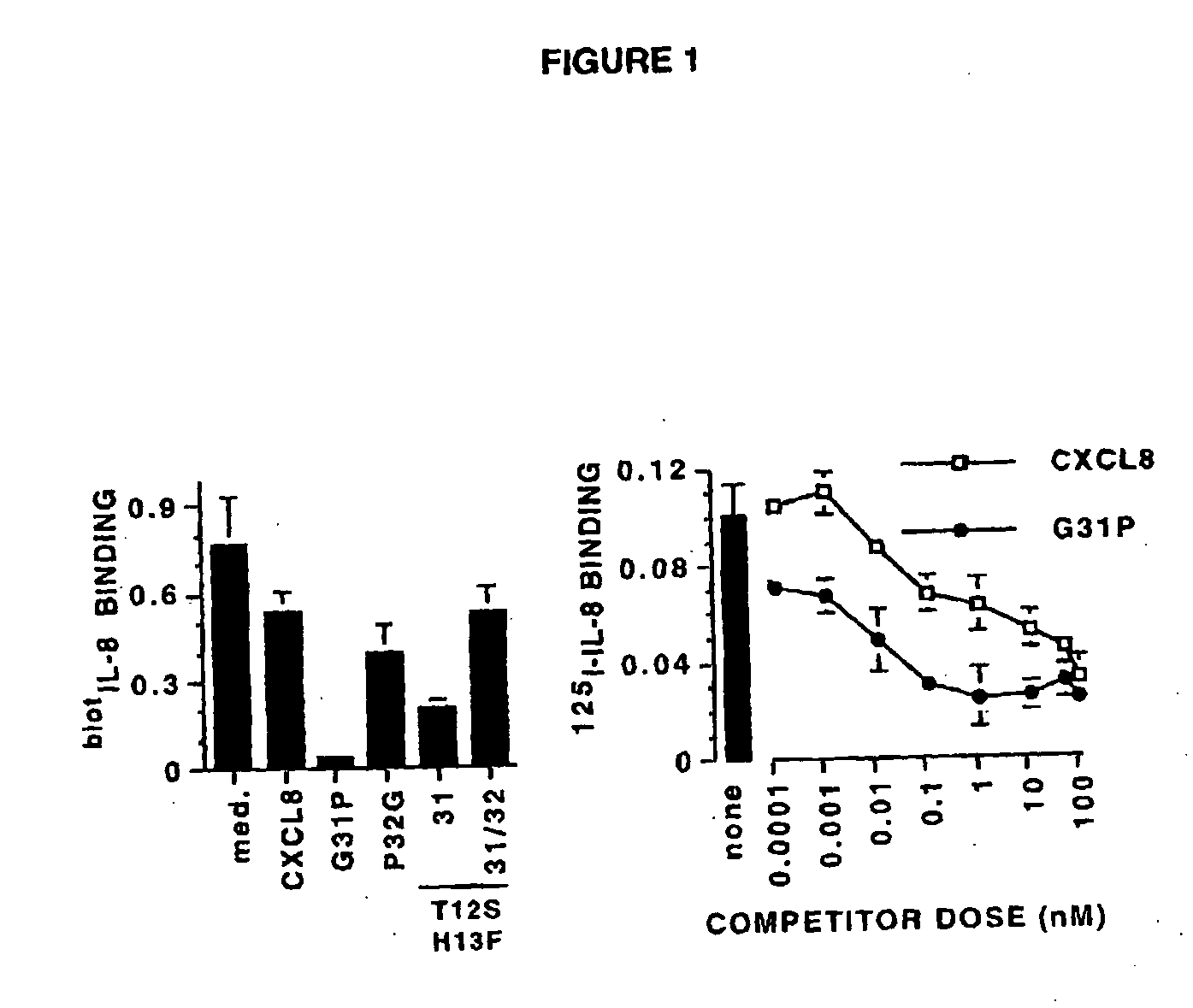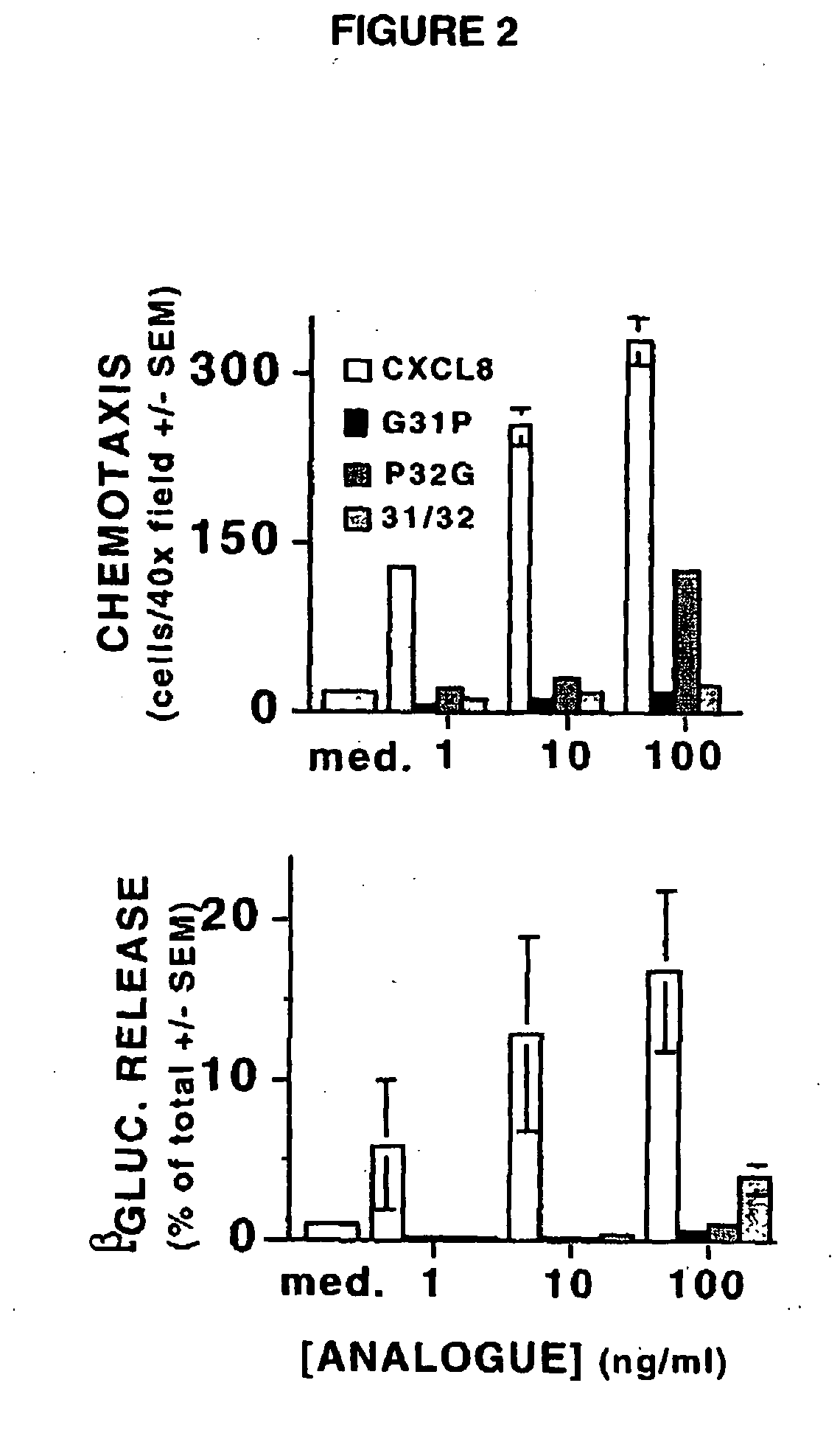High-affinity antagonists of ELR-CXC chemokines
a chemokine and high-affinity technology, applied in the field of cxc chemokine receptor antagonists, can solve the problem that no cxc chemokine antagonists are known in the prior art that are effectiv
- Summary
- Abstract
- Description
- Claims
- Application Information
AI Technical Summary
Benefits of technology
Problems solved by technology
Method used
Image
Examples
Embodiment Construction
[0069] (The following abbreviations are used throughout this disclosure: ARDS, acute respiratory distress syndrome; BALF, bronchoalveolar lavage fluid(s); BHR, Bolton-Hunter Reagent; CXCR1, CXCR2, CXCL8 receptors A, B, respectively; ELR, glutamic acid-lysine-arginine motif; CXCL1, growth-related oncogenealpha; CXCL4, platelet factor-4; CXCL5, epithelial-derived neutrophil activator-78; CXCL6, granulocyte chemotactic protein-2; CXCL8, interleukin-8; fMLP, formyl methionyl-leucylproline bacterial tripeptide; IPTG, isopropyl-thio-D-galactopyranoside; MIP-2, macrophage inflammatory protein-2; PMSF, phenylmethylsulfonyl fluoride; TMB, tetramethylbenzidine.)
[0070] As used herein, ‘an agonist’ refers to an agent that causes a cell to become activated.
[0071] As used herein, ‘an antagonist’ refers to an agent that prevents the cell from being activated in the presence or absence of the agonist.
[0072] As used herein, “purified” does not require absolute purity but is instead intended as a ...
PUM
 Login to View More
Login to View More Abstract
Description
Claims
Application Information
 Login to View More
Login to View More - R&D
- Intellectual Property
- Life Sciences
- Materials
- Tech Scout
- Unparalleled Data Quality
- Higher Quality Content
- 60% Fewer Hallucinations
Browse by: Latest US Patents, China's latest patents, Technical Efficacy Thesaurus, Application Domain, Technology Topic, Popular Technical Reports.
© 2025 PatSnap. All rights reserved.Legal|Privacy policy|Modern Slavery Act Transparency Statement|Sitemap|About US| Contact US: help@patsnap.com



